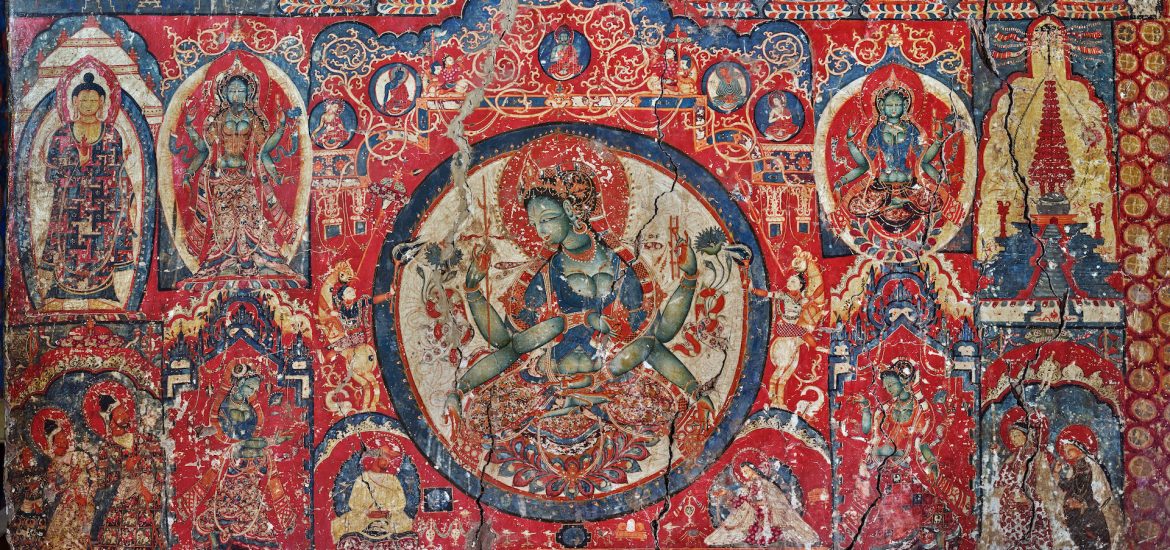I was on my pilgrimage in Dharamshala, having planned to have flown back to Hong Kong by 7 October. But as a typhoon descended on my home city and I began to feel a sense of unease about returning, a hidden force, a presence, nudged me to stay behind in India a little longer. Over the next few days until I returned to Hong Kong on the 11th, I slowly came to feel who was in conversation with me. . . and her mandala that I was gradually unveiling. In fact, I had met her before, in late September on the first leg of my trip to India.
I was high up at the roof of the world, in the Himalayan region. I was in Ladakh to see the Alchi monastic complex, or choskhor (ཆོས་འཁོར་). It is a hidden gem of Buddhist art and culture in the Himalayas. The complex is 22 kilometers from Leh, in a valley that feels like a secret oasis among the barren mountains. According to legends handed down by the local clergy, the complex was built by the student of Atisha, Rinchen Zangpo, between the years 958 and 1055.
Dr. Christian Luczantis, who is the David L. Snellgrove senior lecturer in Tibetan and Buddhist Art, has written that the Alchi monastery is one of four separate hamlets, which altogether comprise “Alchi Village.” The monastery is under the jurisdiction of Likir Monastery and the Archaeological Survey of India. It accommodates some of the most fascinating Buddhist monuments in the Himalayas, and has “three temples and two chörten attributable to the earliest phase of the complex” (Christian Luczantis).
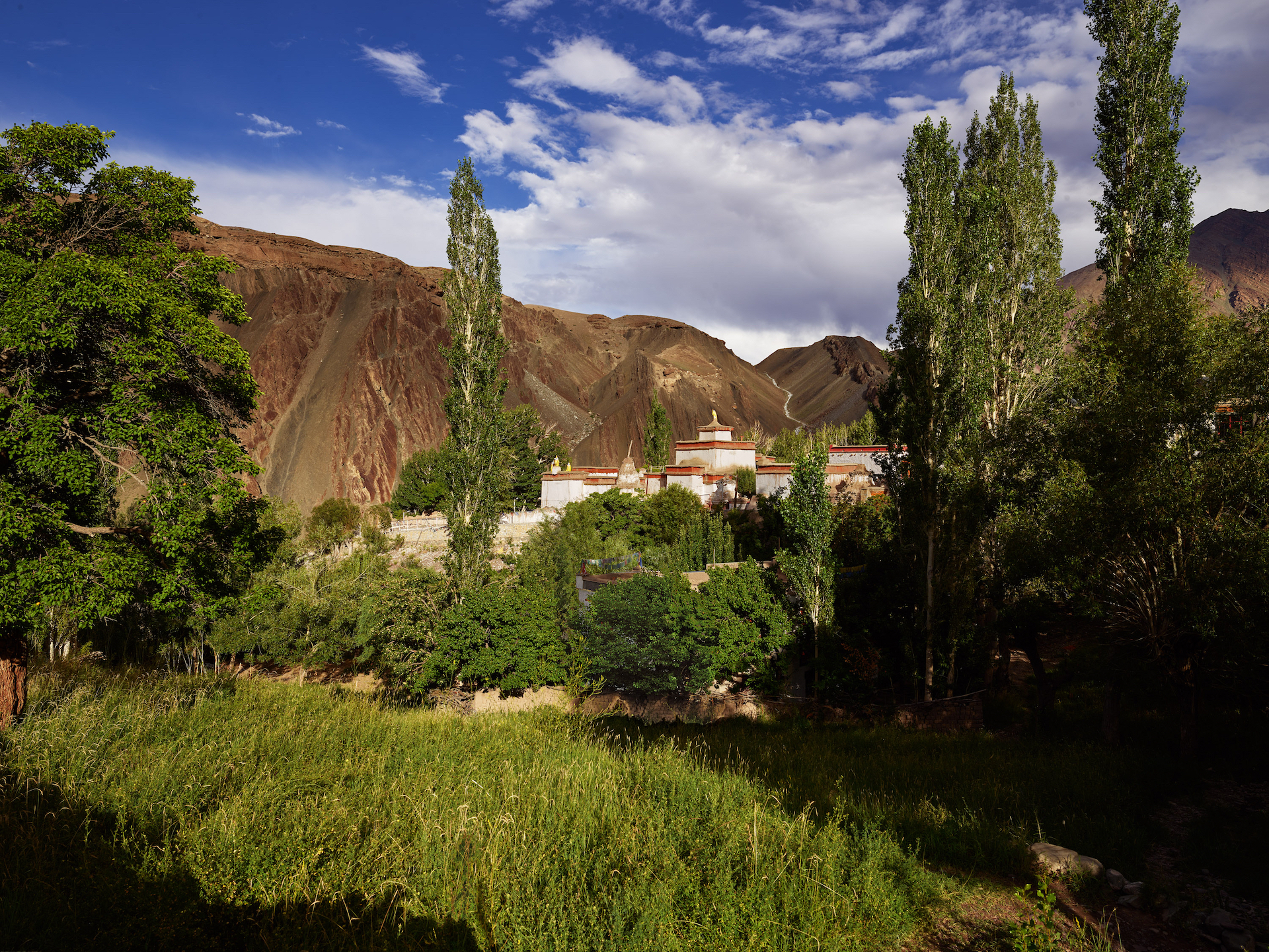
He told me that there is very little history known about the Alchi complex, mostly because we have no written records about it, nor do we have any epigraphy in the area itself. He said that what we do know is that its monastic foundations were based on Nyarma Monastery, near Tiksey. In a WhatsApp conversation, he noted: “by the time Alchi was built, the Parang Guge kingdom that once held sway over the region was split into the three dominions of Ngari Khorsum, one of them being Shey, where modern-day Ladakh is located. Alchi was founded by one of the ruling families of Shey.”
I was awestruck by the paintings and sculptures that populate the complex’s individual monasteries. They are some of the oldest and most beautiful surviving artworks in the world and reflect the influence of Kashmiri styles, with vibrant colors, vivid expressions, and intricate details. Walking among the old grounds, which are in various states of repair, I felt a deep connection with the history and spirituality of this place.
One of the highlights of the monastery is the Three-Storeyed Temple or Sumtsek Hall. As its name betrays, it is a three-storied temple with a pyramid-shaped roof that resembles a Kashmiri pagoda. Inside the hall, you can admire three colossal clay statues of Buddhist deities: Maitreya (the future Buddha), Manjushri (the bodhisattva of wisdom), and Avalokiteshvara (the bodhisattva of compassion).
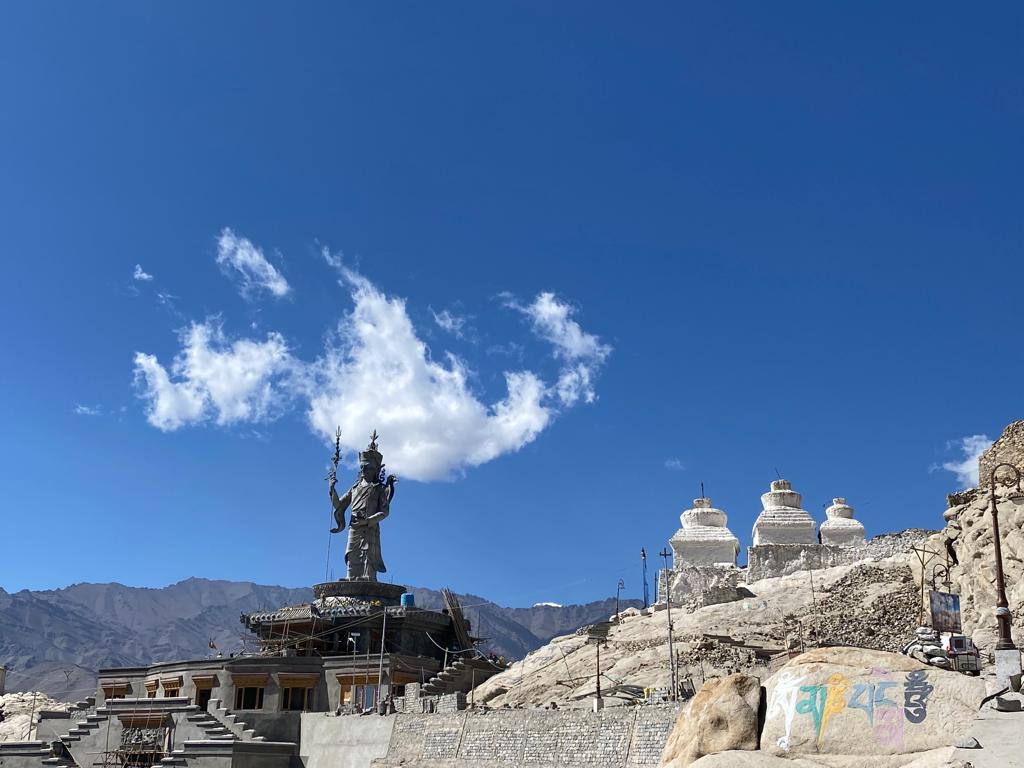
The real treasure at Sumtsek Hall is hidden at the base of Avalokiteshvara’s statue, where you can find a mural of Green Tara, a female deity who represents compassion, protection, and divine action. The mural depicts Tara with a gentle smile that reminds one of the Mona Lisa. This female divinity is flanked by four other green goddesses. The painting is remarkable for its intricate details, vibrant colors, and uniquely serene expression. It is a rare example of the earliest Kashmiri form of esoteric Buddhist art that has survived the ravages of time, vandalism, and nature, high up here in the Himalayas.
The Six-Armed Tara: A Mysterious Goddess of Alchi
Green Tara’s mural shows the six-armed Tara sitting on a lotus throne, with a serene smile and a green complexion. She is surrounded by four other green goddesses, who may be her emanations or attendants. Behind her, there is a lavish throne structure, which contains five Tathagata Buddhas, the five aspects of the primordial Buddha and the five qualities of enlightenment. They are Vairochana in the center, Akshobhya to the east, Ratnasambhava to the south, Amitabha to the west, and Amoghasiddhi to the north.
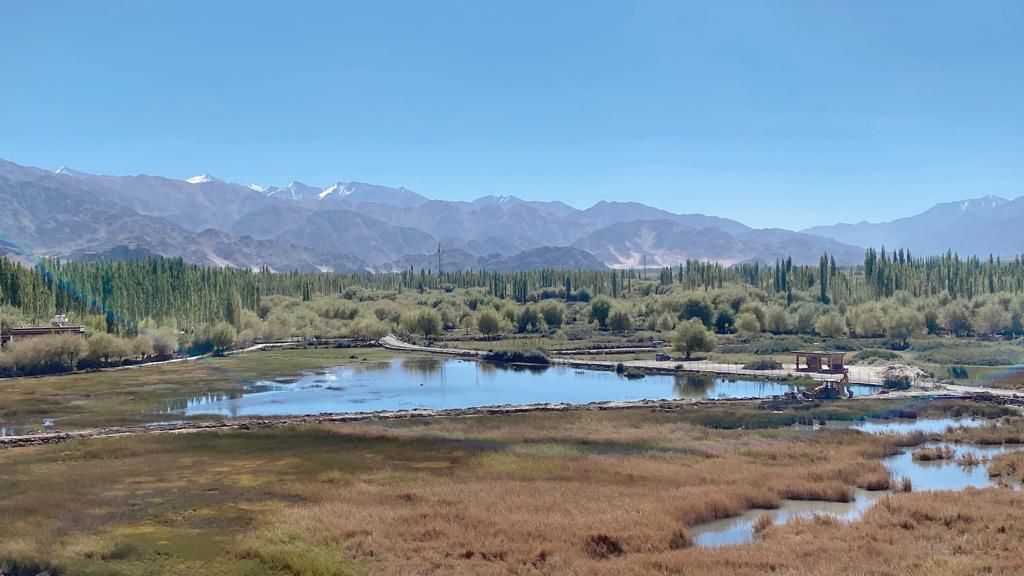
The Tathagata Buddhas are also depicted in the nearby enclave that houses the Vairochana mandala in the Dukhang or assembly hall. The Vairochana mandala is a circular diagram that represents the cosmic order and harmony of Buddhism. It consists of four concentric circles, each containing different symbols and figures. The innermost circle contains the five Tathagata Buddhas, followed by the circle of sixteen bodhisattvas, then the circle of eight auspicious symbols, and finally the circle of twelve animals representing the zodiac signs. The Vairochana mandala is a visual representation of the Buddhist teachings and practices that lead to enlightenment.
Returning to the six-armed Tara: hers is a rare portrayal. To my knowledge, it is more prevalent in Nepalese art than in Tibetan or Indian art. As Jeremy Kahn wrote in Smithsonian Magazine, it is unknown why Green Tara was “accorded such prominence in the Sumtsek paintings. Much about Alchi remains baffling.” (Smithsonian Magazine)
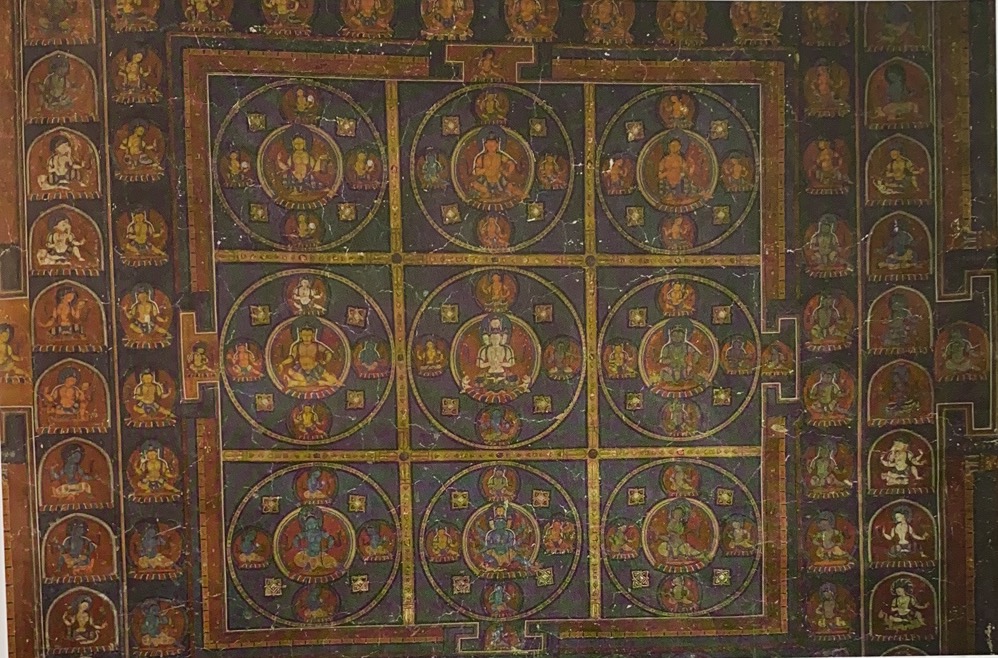
Yet, if you look carefully, in the middle of the throne, there is another green figure, who I believe is Amoghasiddhi, the Buddha of all-accomplishing activity. I believe that Sumtsek’s iconography reveals a unique bond between Green Tara and Amoghasiddhi. In some interpretations of their iconography, Amoghasiddhi and Tara originate from Prajnaparamita, a feminine divinity that embodies prajna and therefore the insight that leads to liberation. Prajnaparamita is also called the “Great Mother” because she gives birth to all Buddhas and bodhisattvas. Therefore, it is possible that this particular six-armed Green Tara is a hybrid of Amoghasiddhi and Prajnaparamita.
Green Tara Mandala or Drolma Korlo: A Dance of Liberation
As I gazed at the Green Tara in Alchi, I noticed four other graceful Green Taras around her, and five Buddhas above her. Could this be a Green Tara mandala? I recall seeing a similar one in Dunhuang Yulin Cave 4, dated to the 13th century-Yuan Dynasty. They have some striking similarities. First, they are both located among a repository of Buddhist statues: Avalokiteshvara, Manjushri, and Shakyamuni Buddha, and surrounded by esoteric mandalas. Second, they share a similar layout and design. This led me to ask: could the Alchi Tara possibly be a visualisation roadmap for practitioners to access this higher power?
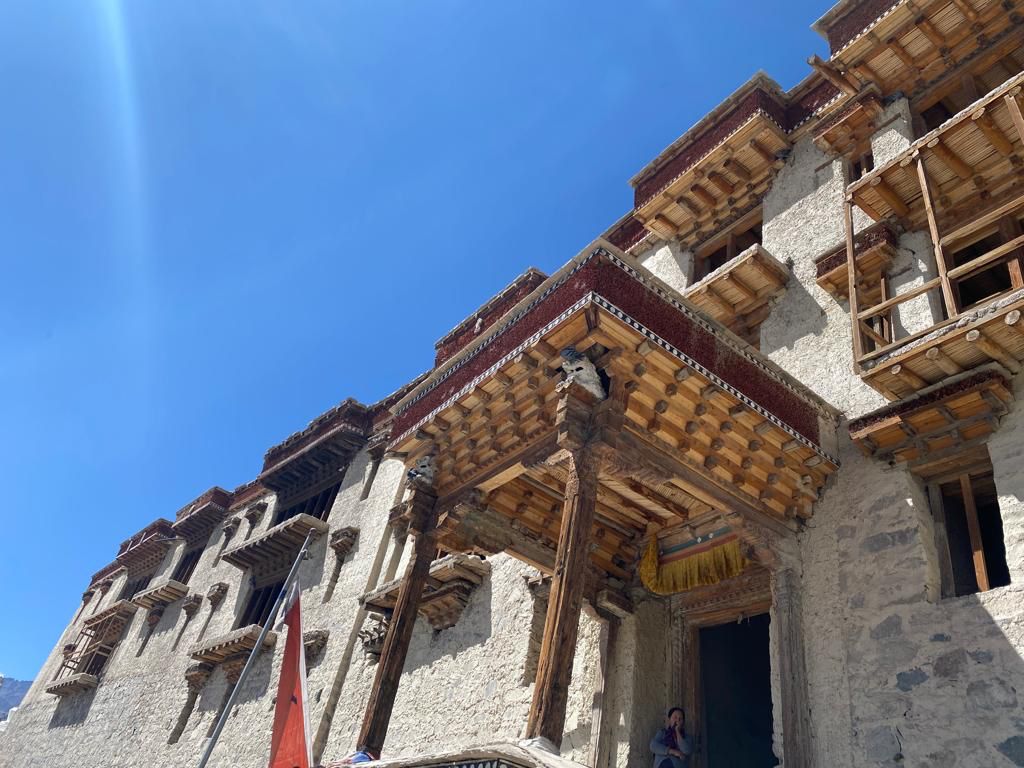
Further investigation reveals more clues to a perhaps hidden transmission of Tara’s devotional cult. Prajnaparamita Devi is the mother of liberation and Tara is her emanation. A famous 11th-century Tibetan yogini, Machig Labdron, had a vision of Tara and dakinis who told her she was a mind emanation of Prajnaparamita. Around then, the Indian Buddhist master Atisha introduced the Green Tara practice to Tibet. Therefore, the legendary founder of Alchi, Rinchen Zangpo, could have merged his favourite goddess Prajnaparamita Devi with Green Tara, creating the six-arm Alchi Green Tara. The 21 Taras and the Tara mandala therefore appear on the temple walls like instructional iconography.
As a Vajra dancer, I could identify in the Alchi Tara’s hand mudras the same ones that I use in my Tara dance. Could I have been looking at a Tara dance sadhana, a practice for spiritual realization? When Kashmir was a Buddhist kingdom, Kashmiri temple dancers were yoginis, not just performers. They became Tara by visualizing her. Could the six-arm Tara be showing a practice to channel the deity and unite with the “star” or “saviour,” which is Tara’s name in Sanskrit?
My Conversation with Tara
I have been exploring the Alchi complex and how the Green Tara there, a unique six-arm goddess, possibly combines the motifs of both Amoghasiddhi and Prajnaparamita. I compared the Alchi Tara with another Tara found at Dunhuang, and suggested that they might once have belonged to a Green Tara mandala in an esoteric transmission that has been long lost. Finally, what if the Alchi Tara reveals a Tara dance sadhana, a way of becoming Tara by channelling her wisdom and compassion?
I truly believe that perhaps, after my meeting with Green Tara, she reached out to me from beyond the formless world of dharmakaya to protect me from prematurely returning to typhoon-struck Hong Kong. Tara is a protective goddess: when speaking about the many stories of how Tara has rescued so many people, Bokar Rinpoche noted: “This isn’t a ‘green goddess sweeping down’ but often takes the form of listening to our own intuitive mind (wisdom)” (Buddha Weekly). Very possibly, she urged me, through signs, signals, and hints, to stay a little longer in India, and in doing so I was even able to meet two amazing artists. I am delighted to share with you their interview with me in my next article.
I hope my journey to Ladakh and to the Alchi complex can also inspire you to encounter Tara and her secrets.
Om Tare Tuttare Ture Svaha!
See more
Alchi, Ladakh (Christian Luczantis)
Glimpses of the Lost World of Alchi (Smithsonian Magazine)
Mama Buddha Tara: Compassionate Action; Stories of Green Tara the Rescuer — How She Can Help You (Buddha Weekly)
Related features from BDG
The Tai Situpa, the Ganden Tripa and the Dalai Lama: My Meetings with Great Masters in India


